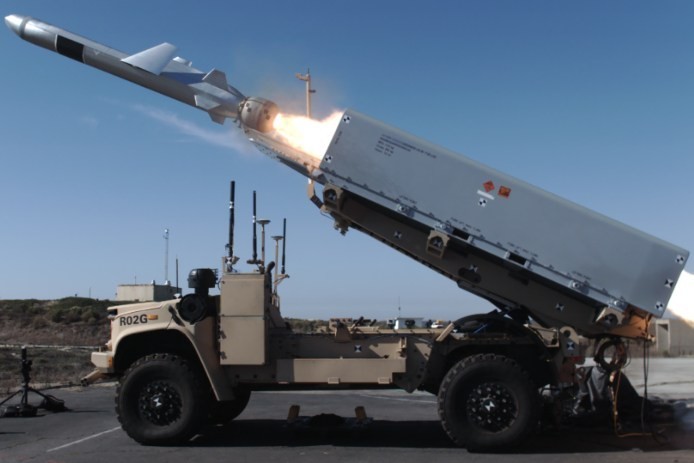U.S. Army DEVCOM Ground Vehicle Systems Center (GVSC), through its Remote Technology Kernel (RTK) technology, is supporting the U.S. Marine Corps with an autonomy solution for its latest innovation to integrate ground based, anti-ship weapons into its arsenal—a remotely operated, unmanned vehicle. The Remotely Operated Ground Unit for Expeditionary (ROGUE) Fires vehicle system is a missile launcher mounted on an unmanned variant of the Joint Light Tactical Vehicle (JLTV) chassis from Oshkosh Defense. In combination, this technology makes up the USMC’s developmental Ground-based Anti-ship Missile (GBASM) system, enhancing its capabilities for a competitive edge.
The autonomy software on the ROGUE Fires vehicle is adopted from a version of the government-owned autonomy stack, RTK, currently in use on GVSC’s Expedient Leader Follower (ExLF) and Autonomous Ground Resupply (AGR) programs. GVSC’s ExLF and AGR programs, commonly referred to as Leader Follower, involve a manned lead vehicle that leads a number of unmanned robotic vehicles in convoy to minimize human Soldier driving in performing Army missions including ground resupply. These programs equip existing military ground vehicles with scalable robotic technology through the integration of modular kits, common interfaces, and a common architecture.

While the Marines are using the Expedient Leader Follower iteration of Ground Vehicle Systems Center’s software for the ROGUE Fires program, Theisen said the software will have the ability to be seamlessly updated to GVSC’s Remote Technology Kernel, which includes additional behaviors developed under the Autonomous Ground Resupply program. Remote Technology Kernel is the common autonomy maneuver software across the United States Department of Defense (U.S. DoD) that enables expedient and affordable integration on current and future ground robotic solutions.
The U.S. Marine Corps wants to be able to sink ships, and it wants that ability fast. NMESIS is envisioned to provide anti-ship fires from land as part of an integrated naval anti-surface warfare campaign. The Marine Corps’ GBASM solution consists of an unmanned JLTV-based mobile launch platform, called the Remotely Operated Ground Unit for Expeditionary Fires (ROGUE-Fires), and the Naval Strike Missile (NSM). The NSM is the same missile used by the navy for the over the horizon weapon system deployed on littoral combat ships. The Naval Strike Missile (NSM) is an anti-ship and land-attack missile developed by the Norwegian company Kongsberg Defence & Aerospace (KDA).
